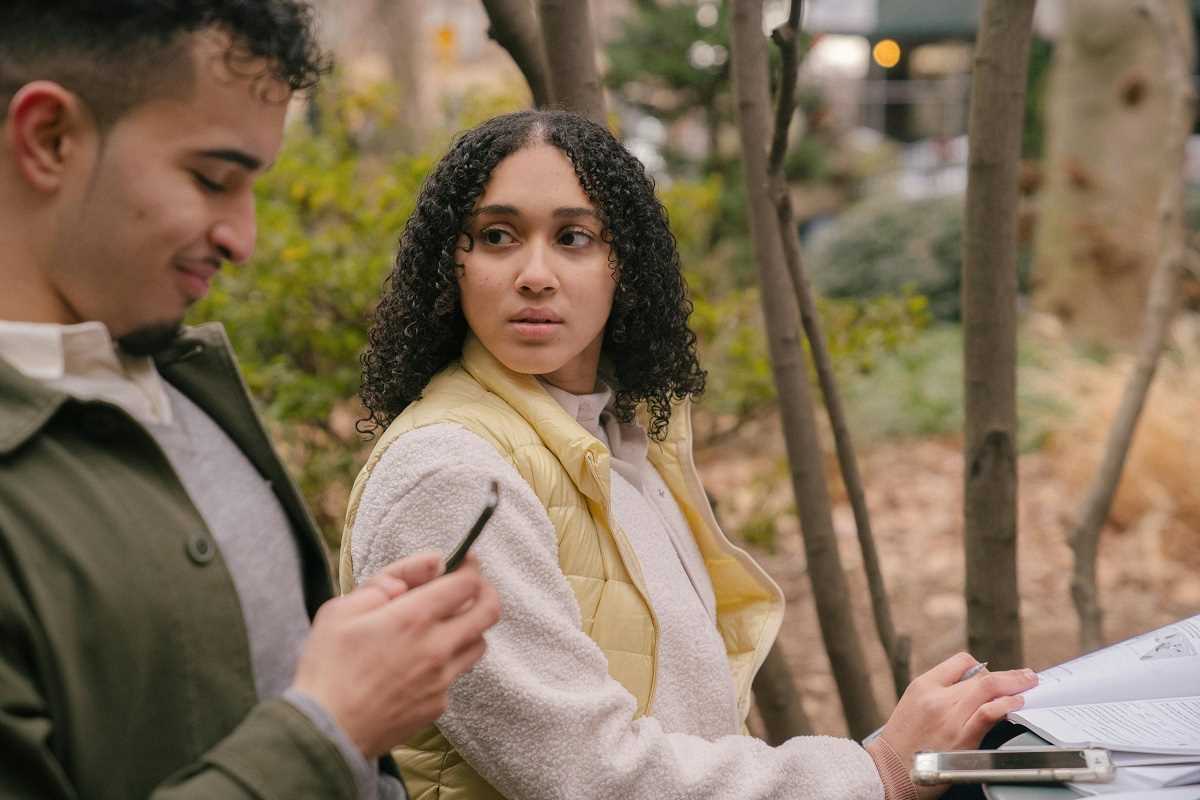We’ve all seen the “unfollow” button do its thing on social media, right? Sometimes, unfollowing an account feels like breaking free from an endless loop of unwanted updates or negative vibes. But what happens when it’s not just about your social feed and you realize you’re following the wrong people in real life too? Whether it’s a toxic friendship, a draining situationship, or a connection that always leaves you feeling less than your best, cutting the cord IRL is a whole different ballgame.
Sometimes, it’s not until you step back that you notice someone’s presence is more harmful than helpful. Maybe it’s the friend who always undermines your wins, the fling who only calls when it’s convenient for them, or the coworker who thrives on drama. But here’s the thing: you don’t owe anyone space in your life if they’re consistently taking more than they give. Toxic connections weigh you down, and letting them go isn’t a betrayal of anyone else; it’s self-care. Here’s how to spot those dynamics, break free, and reset your priorities for healthier, happier relationships.
Identifying Toxic Connections
The first step in cutting ties with toxic connections is recognizing them for what they are. Toxic doesn’t necessarily mean outright horrible or villain-esque behavior. Sometimes, it might mean subtle patterns that drain your energy, diminish your confidence, or add unnecessary stress to your life. Typically, toxic connections are marked by manipulation, lack of respect, or one-sided effort.
For example, in friendships, a toxic dynamic might look like someone who only reaches out when they need something but can never seem to return the favor. They might interrupt you constantly, criticize you harshly under the guise of “just being honest,” or guilt-trip you for setting boundaries. Meanwhile, in romantic relationships, a toxic partner can bring inconsistency, constant jealousy, or emotional unavailability into the mix, leaving you on an emotional rollercoaster.
It’s also worth keeping an eye out for how you feel during and after spending time with someone. If you notice a pattern of feeling emotionally drained, anxious, or less confident in yourself after an interaction, it’s a red flag worth paying attention to. Relationships are supposed to uplift, support, and encourage—not steal your peace.
The Emotional Hold of Toxic Dynamics
The tricky thing about cutting toxic connections is that, even when you know someone isn’t good for you, it can still feel hard to walk away. Whether it’s guilt, nostalgia, or fear of confrontation, emotional ties often keep us in relationships long past their expiration date.
One common reason people hold onto toxic connections is hope. You hope they’ll change. You hope things will go back to how they were in the beginning. This hope can be especially hard to shake if the relationship isn’t all bad; often, toxic connections come with moments of kindness or warmth that can feel genuine. But if those moments are overshadowed by disrespectful or draining behavior, it’s important to weigh the cost of staying in that dynamic.
Another factor is the fear of being alone. Sometimes, it feels easier to stick with the familiar, even if it’s toxic, than to face the uncertainty of letting go. This mindset can lead people to stay in relationships that feel safe but unfulfilling, rather than risking the unknown. But the truth is, cutting these ties creates room in your life for healthier, more fulfilling connections.
Setting Clear Boundaries
Boundaries aren’t just a buzzword; they’re your personal guide for protecting your peace and energy. When dealing with toxic relationships, setting boundaries is an essential step before deciding whether to cut ties completely. Boundaries communicate your limits and give the other person the chance to adjust their behavior.
For instance, if you have a friend who constantly interrupts when you’re sharing something important, you can set a boundary by calmly saying, “I really value our conversations, but I’d appreciate it if you could hear me out before jumping in.” If they respect your boundary, it’s a good sign they’re willing to grow with you. If not, it might confirm their toxic tendencies.
Setting boundaries also means knowing when to say “no.” If someone constantly leans on you for emotional support but never reciprocates, it’s okay to say, “I need some space to focus on myself right now.” Remember, setting boundaries isn’t about being mean; it’s about protecting your energy and well-being.
Knowing When to Walk Away
Not every toxic connection can be salvaged. When boundaries don’t change the behavior, or someone repeatedly dismisses your needs, it’s time to consider letting that relationship go. Walking away can be tough, especially with people you’ve shared special moments with, but holding onto unhealthy dynamics only limits your growth.
One clear sign it’s time to walk away is a lack of respect. If someone consistently disrespects your boundaries, emotions, or values, their actions speak louder than any apologies or promises. Another red flag is if the relationship feels completely one-sided, with you doing all the giving and them doing all the taking. Strong connections require mutual effort, and if that balance is missing, the relationship will likely cause more harm than good.
When ending a toxic relationship, clear communication can help close the door with grace. While you don’t owe anyone an in-depth explanation, being honest shows maturity and self-respect. You might say something like, “I value the time we’ve spent together, but I feel like this relationship isn’t healthy for me anymore. I need to take a step back to focus on myself.” Short, respectful, and to the point works just fine.
Coping with the Fallout
Cutting ties with someone toxic is liberating, but it doesn’t always feel great right away. You might go through a mix of emotions, like guilt, sadness, or even second-guessing your decision. These feelings are normal, especially if you shared a deep connection with that person before things turned toxic.
To cope, remind yourself of the reasons you made this decision in the first place. Journaling can help you process your emotions and gain clarity. Write down how the relationship made you feel and what you’re hoping to gain by walking away. Keeping this list visible can ground you during moments of doubt.
Lean on your support system. Surround yourself with people who uplift and encourage you. Share your experience with a trusted friend or therapist to unpack your feelings in a safe space. Remember, you don’t have to go through this process alone.
Focusing on self-care can also help you heal. Whether it’s taking time for hobbies, practicing mindfulness, or treating yourself to a solo adventure, prioritize activities that bring you comfort and joy.
Creating Space for Healthy Connections
The beauty of cutting toxic ties is the freedom it creates. Without those draining dynamics in your life, you have more time and energy to nurture healthy, positive relationships. This applies to both dating and friendships.
Look for people who make you feel supported, appreciated, and heard. Healthy connections are built on mutual respect, where both parties feel safe to express themselves. They cheer for your wins, stand by you during challenges, and encourage your growth.
Learning from past toxic relationships can help you shape how you approach new ones. Take note of the red flags you overlooked or what boundaries you wish you’d set earlier. These lessons will serve as valuable tools for recognizing and cultivating healthy dynamics moving forward.
Cutting cords with toxic people isn’t just an act of letting go; it’s an act of self-love. By stepping away from what no longer serves you, you’re making space for the relationships, opportunities, and peace you truly deserve. Think of it as unfollowing negativity and inviting positivity to take its place. And trust me, your future self will thank you.
 (Image via
(Image via





.jpg)